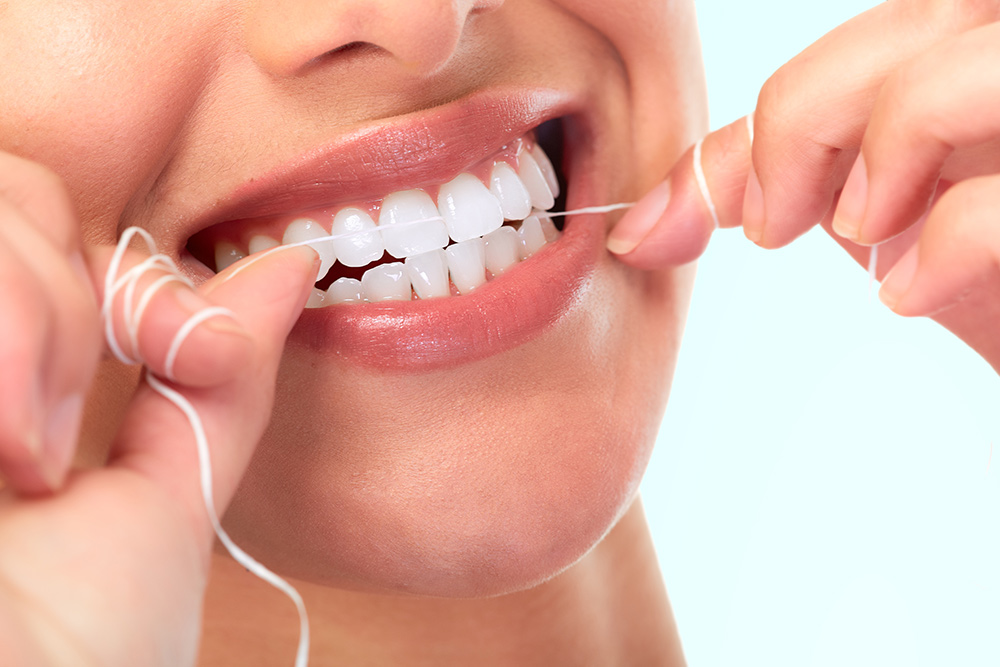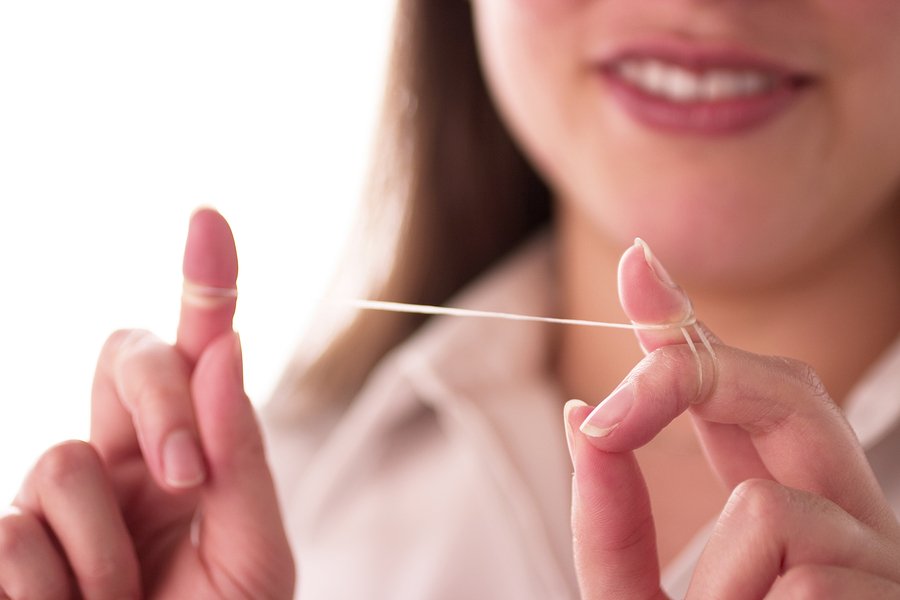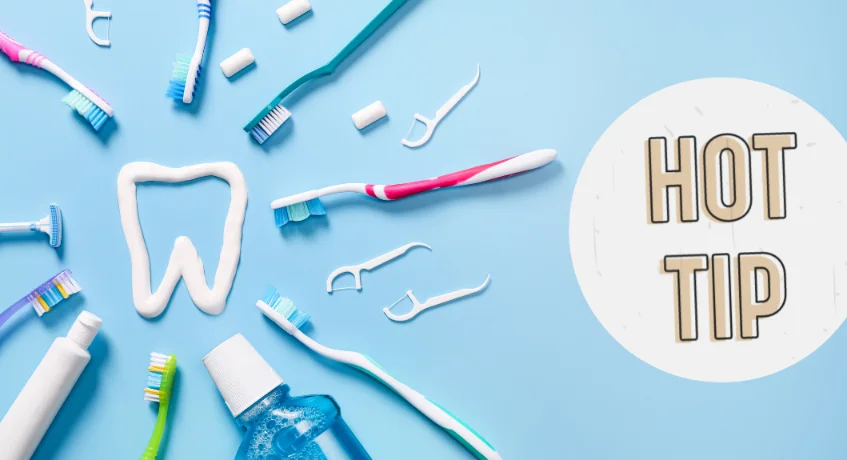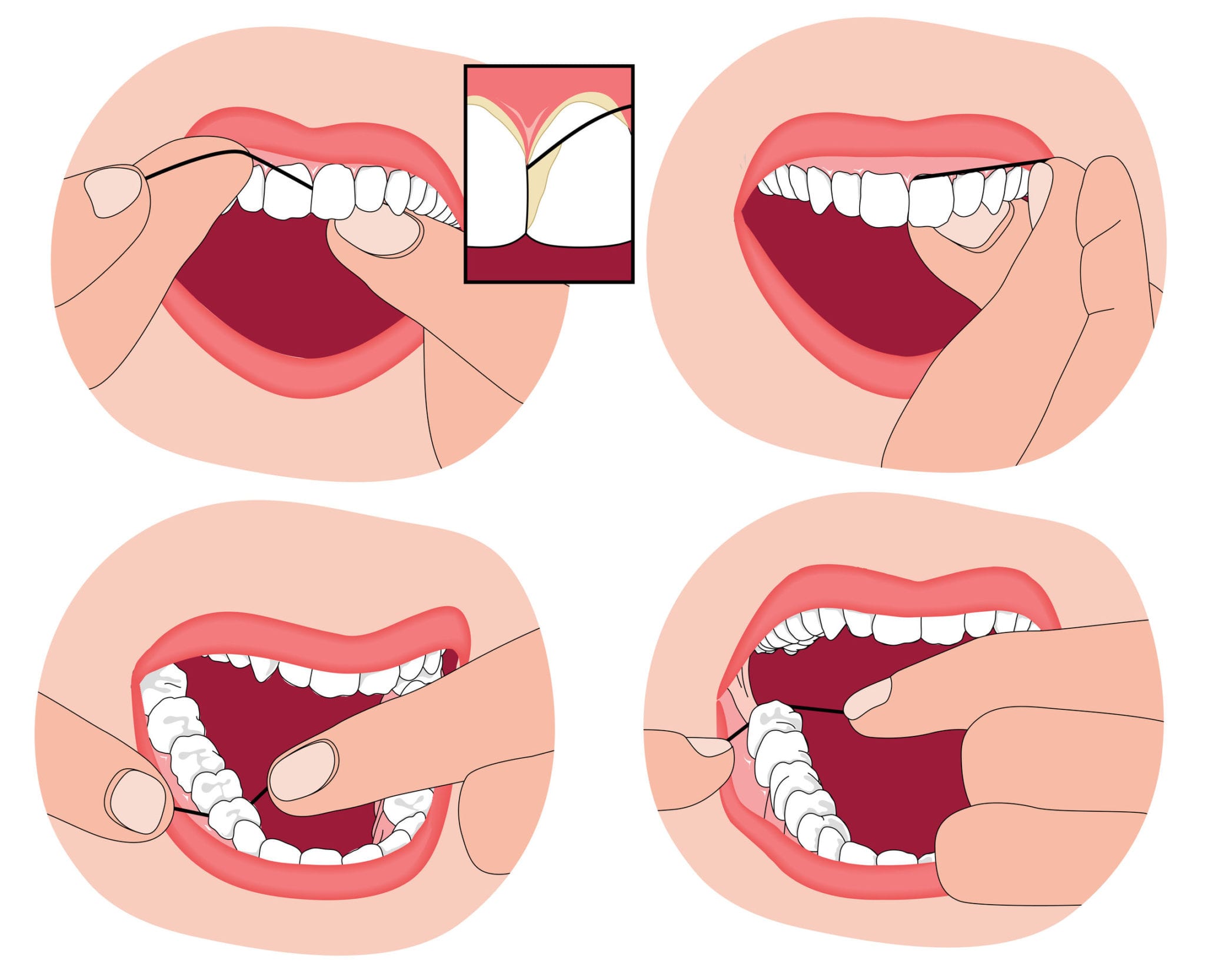Contents
Introduction:
Achieving optimal oral health goes beyond the surface level habits of brushing alone; it delves into the intricacies of a comprehensive oral care routine. At the forefront of this routine lies the often underestimated yet crucial practice of flossing. As we embark on a journey to understand the significance of flossing, it is imperative to recognize its pivotal role in maintaining a healthy mouth and, consequently, a healthier overall well being.
Dental health stands as a cornerstone of our overall health, influencing our ability to eat, speak, and present ourselves confidently. Flossing, often overshadowed by its more prominent counterpart, brushing, emerges as a silent hero in the battle against oral diseases. The interdental spaces, often neglected in regular brushing, become a breeding ground for plaque and tartar, leading to a cascade of dental issues if left unaddressed.
In this comprehensive exploration, we will unravel the layers of flossing, understanding its benefits, debunking common misconceptions, and honing in on the nuances of proper technique. Beyond the conventional view of flossing as a mere cosmetic practice, we will delve into its profound impact on preventing gum disease, preserving fresh breath, and safeguarding against systemic health issues connected to poor oral hygiene.
As we navigate through the intricacies of flossing, we will not only uncover the science behind plaque and tartar but also demystify the array of flossing tools available. From nylon to Teflon, waxed to unwaxed, and the diverse world of flossing accessories, we will guide you in choosing the right tools tailored to your unique oral needs.
Join us as we embark on a step by step journey, learning the art of flossing with precision. From the initial preparation to the correct flossing technique and a systematic approach for full mouth coverage, we will equip you with the knowledge and skills necessary to make flossing an integral part of your daily oral care routine.
Dispelling common misconceptions and addressing frequently asked questions, this exploration aims to empower you to make informed choices about your oral health. The journey does not end with the act of flossing; we will also discuss the frequency, routine adjustments for specific dental conditions, and the harmonious integration of flossing into a holistic oral care regimen.
As we navigate the realms of flossing, our goal is not only to impart knowledge but to inspire a paradigm shift towards viewing oral health as a vital component of overall well being. Together, let us embark on this comprehensive journey to unlock the secrets of proper flossing and pave the way for a healthier, more confident smile.
Benefits of Proper Flossing:
In the intricate landscape of oral health, the benefits of proper flossing extend far beyond the confines of a radiant smile. As we delve into the multifaceted advantages, it becomes evident that flossing is not merely a cosmetic endeavor but a cornerstone in the foundation of overall well being.

Removal of Plaque and Tartar:
- Explanation of Plaque and Tartar: Plaque, a sticky film of bacteria, continuously forms on teeth. When left unaddressed, it calcifies into tartar, a hardened substance that can only be removed by professional dental intervention.
- Consequences of Plaque and Tartar Buildup: The accumulation of plaque and tartar not only jeopardizes the aesthetics of our teeth but also poses a significant threat to oral health. From tooth decay to gum inflammation, the consequences are diverse and can lead to more severe conditions if unmanaged.
Prevention of Gum Disease:
- Overview of Gum Disease: Gingivitis and periodontitis, the two primary stages of gum disease, can wreak havoc on oral health if preventative measures are not employed. Gingivitis, marked by inflamed gums, can progress to periodontitis, which involves the loss of bone supporting the teeth.
- Link Between Gum Health and Overall Well being: Scientific evidence suggests a compelling link between gum health and systemic conditions such as heart disease and diabetes. By thwarting gum disease through proper flossing, we not only preserve our smiles but contribute to our overall health.
Maintenance of Fresh Breath:
- How Flossing Affects Bad Breath: Flossing plays a pivotal role in eliminating trapped food particles and bacteria between teeth, addressing a common cause of bad breath.
- The Connection Between Oral Hygiene and Breath Odor: Beyond the cosmetic concern, persistent bad breath can be indicative of underlying dental issues. Flossing emerges as an essential practice in maintaining not just a fresh breath but a healthy oral environment.
As we navigate through the profound benefits of proper flossing, it becomes clear that this practice transcends the realm of aesthetics. It serves as a proactive measure against dental issues that, if unchecked, can compromise our overall health. By incorporating flossing into our daily routine, we embrace a holistic approach to oral care, fortifying the foundation of a confident and healthy life.
Choosing the Right Floss:
In the diverse landscape of dental care products, selecting the appropriate floss is a crucial step towards effective oral hygiene. The varied types of dental floss and accompanying tools offer a spectrum of choices, each catering to specific needs and preferences. Let’s unravel the intricacies of choosing the right floss and delve into the tools that can elevate our flossing experience.

Types of Dental Floss:
Nylon vs. Teflon Floss: Nylon floss, a traditional choice, exhibits durability and flexibility. Teflon floss, on the other hand, is smoother and may glide more comfortably between teeth. Understanding the nuances of these options empowers individuals to make an informed choice aligned with their unique dental requirements.
Waxed vs Unwaxed Floss: The waxed variant offers ease of use, particularly in tight spaces, while unwaxed floss provides a natural feel. Determining the most suitable option depends on personal preference and the specific challenges posed by individual dental structures.
Flossing Tools and Accessories:
- Dental Tape: Dental tape, broader and flatter than traditional floss, is suitable for individuals with more space between their teeth. It provides effective cleaning for those with widely spaced teeth or dental work such as bridges.
- Floss Picks: Floss picks, with their convenient handles, appeal to those seeking a more user friendly approach to flossing. They are particularly handy for on the go use and can be an excellent alternative for individuals who find traditional flossing challenging.
- Interdental Brushes: These small brushes are designed to clean between teeth and around dental work. Interdental brushes are particularly useful for those with braces or other dental appliances.
As we navigate the myriad options in the world of dental floss, the key lies in understanding individual needs and preferences. Whether opting for the traditional durability of nylon or the smooth glide of Teflon, the choices are as diverse as our dental landscapes. Armed with knowledge about the various types of floss and supplementary tools, individuals can tailor their oral care routine, transforming flossing from a mundane task into a personalized and effective ritual.
Step by Step Guide on How to Floss Properly:
Mastering the art of flossing involves more than just the physical act of moving a string between teeth. A systematic and precise approach is paramount to ensure that all interdental spaces are thoroughly cleansed, reducing the risk of plaque buildup and gum disease. Let’s embark on a step by step guide to flossing, from preparation to execution, ensuring an effective and comprehensive oral care routine.
Preparing for Flossing:
- Wash Hands: Begin by washing your hands thoroughly. Clean hands ensure that you are not introducing additional bacteria into your mouth during the flossing process.
- Gather Necessary Tools: Ensure you have the right floss and any additional tools, such as floss picks or interdental brushes, on hand. Proper preparation sets the stage for a successful flossing experience.
Correct Flossing Technique:
- Cutting an Adequate Length of Floss: A piece of floss between 18 to 24 inches is typically sufficient. This allows for a fresh section of floss to be used between each pair of teeth.
- Holding the Floss Properly: Secure the floss around your fingers, leaving a small section to work with. The goal is to maintain control and maneuverability while flossing.
- Gentle Glide Between Teeth: Slide the floss gently between your teeth, following the natural curve of each tooth. Avoid snapping or forcing the floss, as this can cause injury to the gums.
Flossing Sequence:
- Systematic Approach for Full Mouth Coverage: Start with a specific section of your mouth and progress systematically to cover all areas. Consider dividing your mouth into quadrants to ensure thorough coverage.
- Special Considerations for Dental Work: If you have dental work such as braces or bridges, take extra care to navigate around these structures. Flossing aids like floss threaders or interdental brushes may be beneficial in these instances.
By adhering to this step by step guide, individuals can transform flossing from a routine task into a purposeful and effective component of their daily oral care regimen. Understanding the nuances of proper flossing technique and incorporating it seamlessly into one’s routine lays the foundation for a healthier smile and overall dental well being.
Common Mistakes to Avoid:
In the pursuit of optimal oral health through flossing, steering clear of common mistakes is paramount. These pitfalls, if left unaddressed, can compromise the effectiveness of the flossing routine and, in some instances, lead to unintended consequences such as gum irritation or injury. Let’s navigate through the potential pitfalls and discover how to avoid them for a seamless and beneficial flossing experience.

Snapping Floss Between Teeth:
- Explanation of Potential Harm: Forcefully snapping the floss between teeth can harm the delicate gum tissue and even cause small cuts. This aggressive approach not only leads to discomfort but can also create an aversion to regular flossing.
- Proper Technique for Tight Spaces: Instead of snapping, gently guide the floss into tight spaces using a sawing motion. Patience and a gentle touch are key to effective flossing without causing harm.
Being Too Rough on Gums:
Importance of Gentle Pressure: Excessive force during flossing can irritate the gums, leading to redness and bleeding. Gentle pressure is sufficient to remove debris and plaque without causing harm.
Signs of Irritation and Over Flossing: Pay attention to signs of gum irritation, such as bleeding or tenderness. If these signs persist, it may be an indication of over flossing or an incorrect technique. Adjust the pressure and technique accordingly.
Neglecting the Back Teeth:
- Tips for Reaching Back Teeth: The back teeth, often harder to reach, are susceptible to plaque buildup and decay if neglected. Use a mirror for better visibility and consider using floss picks or interdental brushes to access these areas effectively.
- Impact of Neglect on Overall Oral Health: Neglecting the back teeth can undermine the comprehensive benefits of flossing. By incorporating techniques specifically targeting these areas, individuals can ensure a thorough and effective oral care routine.
As we navigate the nuances of flossing, steering clear of these common mistakes becomes integral to harnessing the full benefits of this practice. By adopting a gentle yet effective approach, individuals can transform flossing from a potential source of discomfort to a seamless and rewarding aspect of their daily oral care regimen.
Flossing Frequency and Routine:
Establishing a consistent flossing routine is a pivotal component of maintaining optimal oral health. The frequency and integration of flossing into one’s daily oral care regimen can significantly impact the prevention of dental issues. Let’s delve into the considerations surrounding flossing frequency, its alignment with dental health recommendations, and how to seamlessly incorporate it into a comprehensive oral care routine.
Recommended Frequency by Dentists:
Dental professionals typically recommend flossing at least once per day. This frequency is optimal for effectively removing plaque and debris from between teeth and along the gumline.
Adhering to this recommended frequency ensures a proactive approach to preventing gum disease, cavities, and other oral health issues.
Incorporating Flossing into Daily Oral Care Routine:
To make flossing a consistent habit, it’s advisable to incorporate it into a daily oral care routine. Choosing a specific time, such as before bedtime, helps establish a ritual that becomes second nature.
Pairing flossing with other oral care activities, such as brushing and using mouthwash, creates a comprehensive routine that addresses various aspects of dental health.
Adjusting Routine for Individuals with Specific Dental Conditions:
Individuals with specific dental conditions, such as braces, bridges, or dental implants, may need to adjust their flossing routine. Specialized tools like floss threaders or interdental brushes can facilitate effective cleaning around dental work.
Dental professionals can provide personalized guidance on adapting flossing routines based on individual oral health needs.
By aligning with dental health recommendations and seamlessly integrating flossing into a daily routine, individuals can harness its preventive benefits more effectively. The consistency of flossing not only preserves oral health but also establishes a proactive approach to overall well being. As we explore the frequency and routine aspects of flossing, the goal is to empower individuals to make informed choices that contribute to a lifetime of healthy smiles.
Additional Tips for Optimal Oral Hygiene:
Beyond the fundamental practice of flossing, a comprehensive approach to oral hygiene involves integrating additional tips and habits that collectively contribute to the maintenance of a healthy mouth. In this section, we’ll explore supplementary practices and considerations that complement flossing, ensuring a well rounded oral care routine.

Regular Dental Check ups:
Scheduling regular dental check ups is crucial for preventive care. Dental professionals can identify and address potential issues before they escalate, providing professional cleaning and guidance on optimal oral hygiene practices.
Routine check ups also facilitate early detection of oral health conditions, allowing for timely intervention and treatment.
Proper Brushing Techniques:
Brushing teeth using proper techniques is essential for thorough plaque removal. Adopting a soft bristled toothbrush and brushing in gentle, circular motions helps prevent gum recession and enamel erosion.
Brushing for at least two minutes, twice a day, ensures comprehensive coverage of all tooth surfaces.
Mouthwash and Additional Oral Care Products:
Mouthwash can serve as a valuable addition to an oral care routine, providing antimicrobial benefits and freshening breath. However, it should not be a substitute for flossing and brushing.
Choosing oral care products with fluoride, an essential mineral for strengthening enamel, contributes to cavity prevention.
As we explore these additional tips, the emphasis is on fostering a holistic approach to oral health. Regular dental check ups, proper brushing techniques, and the strategic use of oral care products complement the benefits of flossing, creating a synergistic effect that promotes overall oral well being. By incorporating these practices into a daily routine, individuals can elevate their oral hygiene regimen and lay the foundation for a lifetime of healthy teeth and gums.
Frequently Asked Questions (FAQs):
In the realm of oral care, questions often arise regarding flossing techniques, potential issues, and the overall impact on dental health. This section aims to address common queries, dispel uncertainties, and provide clarity on various aspects of flossing, empowering individuals to make informed decisions about their oral hygiene practices.
Can I Over floss?
- Explanation: While regular flossing is essential for optimal oral health, over flossing can potentially lead to gum irritation and damage. It’s crucial to find a balance and adopt a gentle yet effective flossing technique.
- Guidance: Dental professionals recommend flossing once a day. If there are concerns about over flossing, consulting with a dentist can provide personalized guidance based on individual oral health needs.
Is Flossing Painful?
- Normal Discomfort vs Pain: Flossing may cause some discomfort, especially if it’s a new addition to the oral care routine. However, persistent pain or bleeding may indicate an issue that requires attention.
- Adjusting Technique: If flossing is consistently painful, adjusting the technique, using a softer touch, or trying alternative flossing tools may help alleviate discomfort.
Should I Floss Before or After Brushing?
- Sequential Order: The sequence of flossing and brushing can vary. Some individuals prefer flossing before brushing to dislodge debris, while others do it afterward to clear remaining particles. The key is to maintain consistency in both practices.
- Comprehensive Approach: Ultimately, the order matters less than the thoroughness of each activity. Adopting a comprehensive approach that includes both flossing and brushing ensures a more effective oral care routine.
Addressing these frequently asked questions provides clarity on common concerns surrounding flossing. By understanding the nuances of flossing practices, individuals can navigate their oral care routines with confidence, promoting a healthy and pain free experience that contributes to overall well being.
Conclusion:
As we draw the tapestry of proper flossing to a close, the intricate threads woven throughout this exploration converge to reveal the profound impact of this seemingly simple practice on our oral health and overall well being. The journey from understanding the importance of dental health to mastering the art of flossing has illuminated the path to a confident and healthy smile.
In recapitulation, the benefits of proper flossing extend beyond the removal of plaque and prevention of gum disease; they encompass the holistic maintenance of fresh breath and the safeguarding of systemic health. Flossing emerges as a proactive measure, a silent hero in the ongoing battle against dental issues that, if left unattended, can compromise not only the aesthetics of our smile but the foundation of our overall health.
Choosing the right floss, as we’ve discovered, involves a thoughtful consideration of types and tools tailored to individual needs. The step by step guide provided a roadmap for effective flossing, transforming it from a routine task into a purposeful and rewarding part of our daily lives. Steering clear of common mistakes and understanding the nuances of flossing frequency further fortified the foundation of a comprehensive oral care routine.
In the broader context of oral hygiene, we explored additional tips and practices that complement flossing, advocating for regular dental check ups, proper brushing techniques, and strategic use of oral care products. Frequently asked questions were addressed, aiming to provide clarity and guidance for individuals navigating their oral care journey.
As we conclude this journey through the intricacies of flossing, the message is clear: oral health is a vital component of overall well being, and proper flossing is an integral element in preserving the health and radiance of our smiles. The insights gained from this exploration empower individuals to make informed choices, transforming the act of flossing from a mere task into a conscious investment in a lifetime of confident and healthy oral care. May the knowledge shared here serve as a beacon, guiding you towards a brighter and healthier smile.
